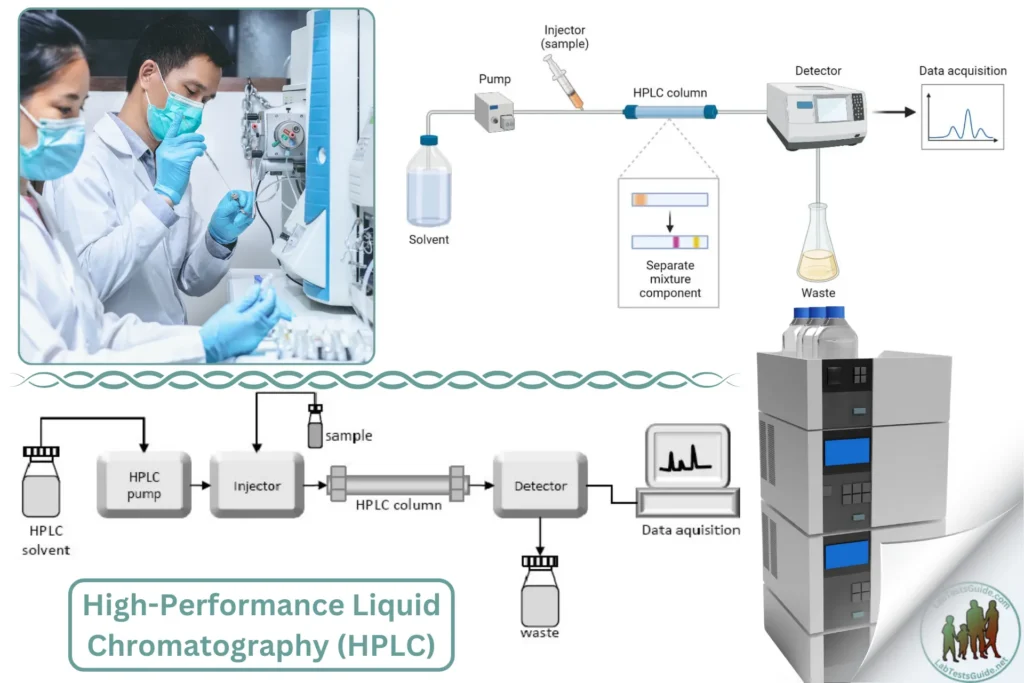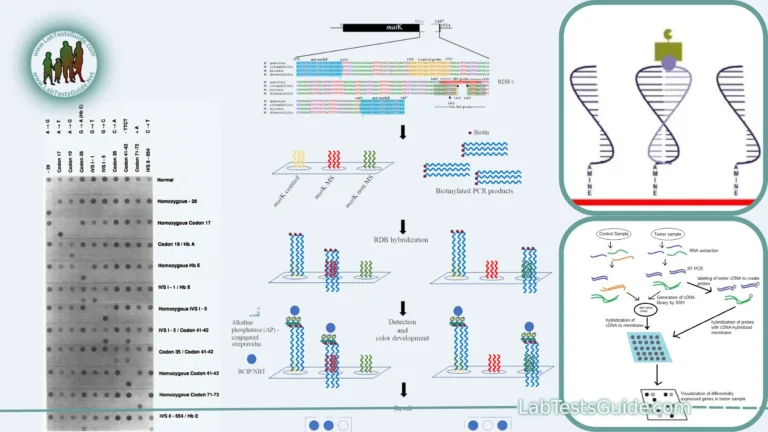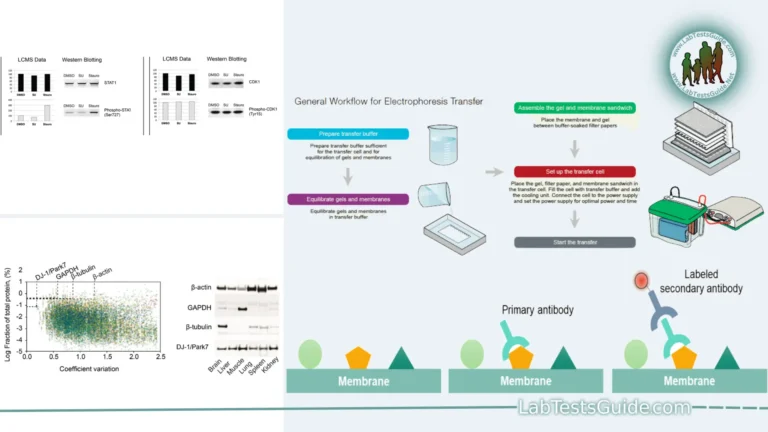High-Performance Liquid Chromatography (HPLC) is a powerful analytical technique used in clinical laboratories for separating, identifying, and quantifying components in complex mixtures. It is widely used for drug monitoring, hormone assays, and analyzing various biomolecules.

Introduction
High-Performance Liquid Chromatography (HPLC) is a powerful analytical technique used in clinical laboratories for separating, identifying, and quantifying components in complex mixtures. It is widely used for drug monitoring, hormone assays, and analyzing various biomolecules.
Principle:
HPLC operates on the principle of separating compounds based on their interactions with a stationary phase (column packing material) and a mobile phase (solvent). Compounds are separated as they travel through the column at different rates and are detected by various detectors.
Specimen Requirements:
- Type of specimen: Blood, serum, plasma, urine, tissue extracts
- Volume of specimen required: Typically 0.5-2 mL
- Collection method: Standard clinical procedures for sample collection (e.g., venipuncture for blood)
- Handling and storage requirements: Store samples at 2-8°C if not analyzed immediately; freeze samples for long-term storage
- Stability of the specimen: Dependent on the analyte; refer to specific stability guidelines
Reagents and Materials:
- Mobile phase solvents (e.g., water, acetonitrile, methanol, buffers)
- Standards and calibration solutions for the analyte of interest
- Internal standards (if applicable)
- Sample preparation reagents (e.g., extraction solvents, derivatization reagents)
- HPLC column (appropriate for the specific analysis)
- Filtration units or membranes for sample and solvent filtration
Equipment:
- HPLC system (including pump, injector, column, detector, and data system)
- Autosampler (optional)
- Analytical balance
- Vortex mixer
- Centrifuge
- Ultrasonic bath (for degassing solvents)
- Filtration apparatus
Procedure:
Sample Preparation:
- Prepare samples by appropriate methods such as protein precipitation, liquid-liquid extraction, or solid-phase extraction.
- If necessary, filter the sample through a 0.2 or 0.45 µm membrane to remove particulates.
- Dilute the sample with the mobile phase if required.
HPLC Setup:
- Set up the HPLC system according to the manufacturer’s instructions.
- Prepare the mobile phase and degas it using ultrasonication or a vacuum system.
- Install and equilibrate the HPLC column with the mobile phase at the recommended flow rate and temperature.
Calibration and Quality Control:
- Prepare calibration standards at different concentrations by diluting the stock standard solution.
- Inject the calibration standards into the HPLC system to create a calibration curve.
- Run quality control samples (low, medium, high) to ensure system performance.
Sample Analysis:
- Inject a blank sample to ensure there is no carryover or contamination.
- Inject the prepared samples and record the chromatograms.
- Analyze the samples in batches with periodic injections of calibration standards and quality control samples to maintain accuracy.
Quality Control:
- Run blank, calibration, and control samples to validate the accuracy and precision of the HPLC method.
- Ensure regular maintenance and calibration of the HPLC system.
- Validate the method for parameters such as linearity, sensitivity, specificity, and reproducibility.
Calculation and Interpretation:
- Quantify the analyte concentration in the samples using the calibration curve.
- Ensure that the retention times and peak shapes are consistent with the standards.
- Interpret the results within the clinical context and consider potential sources of error, such as sample degradation or interference.
Limitations:
- HPLC requires careful preparation and handling of samples and solvents to avoid contamination and degradation.
- The technique may be limited by the availability of suitable columns and detectors for specific analytes.
- Method development and validation can be time-consuming and require specialized knowledge.
Safety Precautions:
- Wear appropriate PPE (gloves, lab coat, safety goggles).
- Handle all reagents and samples according to standard biohazard and chemical safety protocols.
- Work in a well-ventilated area or fume hood when using volatile or hazardous solvents.
- Dispose of waste according to local regulations.
References
- Snyder, L. R., Kirkland, J. J., & Dolan, J. W. (2010). Introduction to Modern Liquid Chromatography. John Wiley & Sons.
- Clinical Chemistry: Principles, Techniques, and Correlations by Michael L. Bishop, Edward P. Fody, and Larry E. Schoeff.
- Tietz Textbook of Clinical Chemistry and Molecular Diagnostics.
- Manufacturer’s instructions for HPLC system and columns.
- Clinical Laboratory Standards Institute (CLSI) guidelines.
This format can be adapted for various types of HPLC analyses by adjusting the specific details to match the methodology used for each type of assay.
Possible References Used







